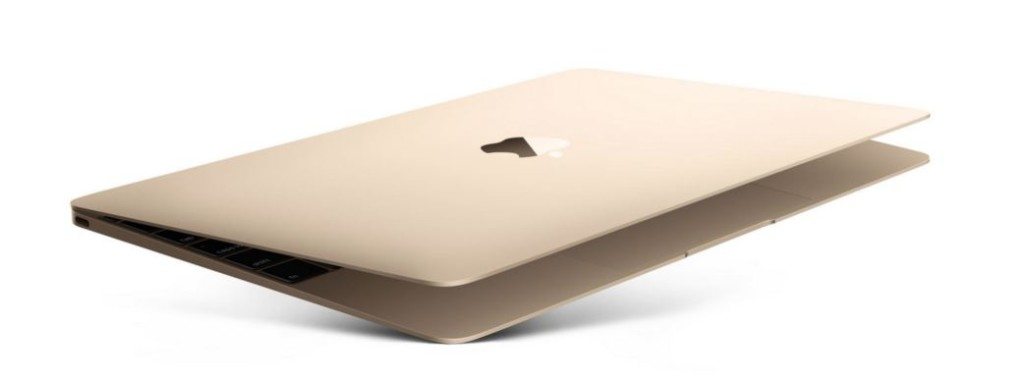It is pretty sad when even the WSJ calls a new Apple product unusable. But that is effectively what happened this week with the new Apple MacBook. But as I read the review and similar reviews out on this new Apple Halo product I realized that the problem wasn’t the product, the problem was how it was positioned. For its likely target audience there really is no product I know of better than this new MacBook. However, it isn’t for everyone and it is being killed in reviews because without direction reviewers are more likely to compare it to an old Netbook or a new general use laptop and, in all honesty, this product actually stands alone. Granted part of this confusion is due to the fact that Google has a high end Netbook that looks really similar in this same price range but both products are really only interesting to a small, but admittedly elite, group of folks.
Both are targeted at top executives and similar folks who value design, weight, ease of use, and battery life ahead of all else.
So the problem isn’t the product, the problem is marketing and I think it is worse, at least for Apple, than a product problem would be.
IBM Example
Back in the 1990s, at least the early 1990s, IBM was a bit of a mess in fact a lot of folks didn’t think it was going to survive. It had to do its first ever layoff (and it was already well over 50 years old) and it fired its CEO, something else that had never happened before. In addition the brand had negative equity, now that’s really bad, this means that folks at the time would pay less for an IBM product than they’d pay for an equal product with a generic brand like “Bob’s Servers”.
So Louis Gerstner did something that hadn’t been done before in tech. He built the world’s best marketing organization staffing it with the leading experts in marketing from every industry he could find and fixed IBM’s image long before he finished fixing the company (in fact you could argue he never really finished fixing the company). And the firm emerged from its dark cloud and things got better.
One of the most interesting results is that IBM was seen as the leader in ecommerce long before the company actually had a solution, something that HP, who had a solution, was really annoyed about.
But when Sam Palmisano took over for Gerstner he didn’t see the value of marketing and saw the organization as an expensive cost center. He effectively eliminated it and many of IBM’s problems of over the last few years has resulted from the fact that IBM no longer can do amazing things with marketing.
Steve Jobs Apple
When Jobs ran Apple one of the things that drove competitors nuts was he could come up with derivatives of products that weren’t selling and then corner the market with them. MP3 players were a joke before he came up with (well got) the iPod and they were generally selling at around $100. He hit the market with a product in the $500 price range and turned Apple around on its success, granted it took 3 years. Then he took a design that companies like LG couldn’t even seem to give away and he drove Palm out of business and almost did the same thing to Blackberry and Microsoft. And finally, to add insult to injury, he took a concept he’d publically called stupid, the tablet, and created another massive wave.
He did this all by getting people to see these products as different and unique. To see their strengths and look over their shortcomings, and to line up to buy things they hadn’t even seemed to want before. With Jobs this was an art.
MacBook
So if you look at the MacBook what you should see is the product that folks like Tim Cook want to use. This for the elite laptop user, more of an executive or a manager than a productivity worker. They need to review documents, communicate, and browse the web but that’s about it. Portability and style is paramount for them. This is for the folks that others admire and want to be like, it isn’t for the average user who needs the ports, power, and robustness of a day to day product. This is more Ferrari than Fiat, more Rolls Royce than VW, and more Lear Jet than coach seat.
As a Halo product it is something to aspire to but really should only be attractive to about 10% or less of potential buyers but, for them, this should check all of the boxes.
The Problem
But the problem is instead of being presented as an elite product this is presented as a MacBook, it isn’t even a MacBook Air. The branding suggests mainstream use and it isn’t good for that. So it is getting killed in reviews because it is being reviewed as a mainstream, productivity worker, product something for the 90% not something for the 10% and it isn’t any more ideal for the average employee than a Ferrari would be a great family car.
So the issue isn’t the product, the issue is marketing and they simply took a product that is ideal for one group of elite users and positioned it like it was a great offering for everyone and it isn’t, not even close.
Wrapping Up: The Power of Marketing
Much like Sam Palmisano at IBM Tim Cook doesn’t appear to get how important marketing is but unlike IBM Apple didn’t have just a great marketing group, its CEO understood how to market and was a micro-manager. It isn’t that they aren’t doing quality work, it is they don’t seem to know what needs to be done and the end result is that Apple products are no longer being seen in the best light. The Apple Watch is getting a similar reception, yes the fans are buying every one Apple makes, but the reviewers are finding the product less than compelling and again, I think that is because the product isn’t properly positioned yet. The Watch isn’t for everyone either.
So despite the reviews, what is broken at Apple isn’t the products, it’s the marketing.
- The Human Element: HP’s Latest Security Report and My Near-Miss with a Digital Predator - July 11, 2025
- The Mighty Mini: Why HP’s Z2 Mini G1a Workstation Is the Unsung Hero of AI Development - July 7, 2025
- The HP OmniBook X Flip 2-in-1 16-Inch: Your New Digital Swiss Army Knife (Now in Glorious Atmospheric Blue) - June 25, 2025



